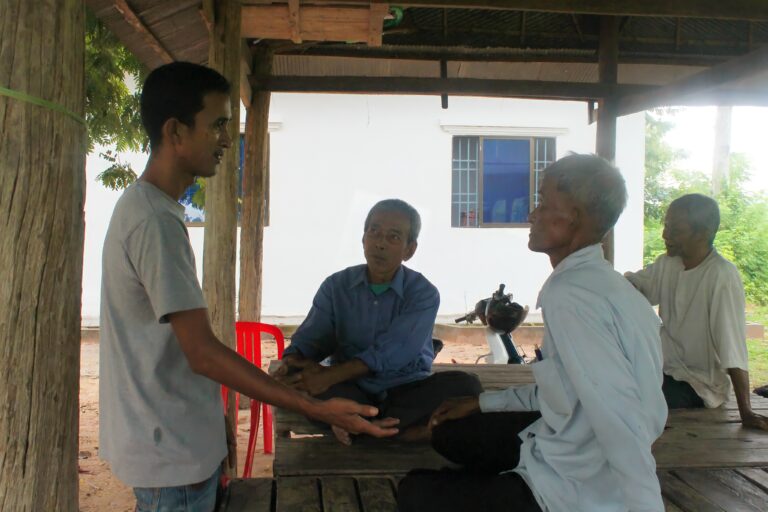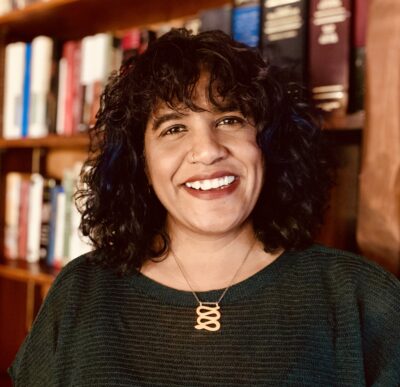Sites of Conscience, Spaces for Healing

The sun beat down on the white sand, while colorful fishing boats bobbed around the water’s edge. Fisherman rested in the shade, dosing to rhythmic beats of the drummers who sat under the baobab tree. Crafters haggled with tourists dressed in Kente cloth while a group of children raised clouds of dust playing catch. The smell of fried fish permeated the air.
As I left the confines of Maison des Enclaves – a historic house in Senegal that played a role in the transatlantic slave trade – this was the scene that greeted me. My walk through the site, tracing the path of the many more before me, had left me bereft. I felt a deep sense of sadness and anger as I imagined how men, women and children were separated from their families, and sold into an unknown future. But as I walked out to this scene something lifted within me: A tiny spark of joy for life, rest, play and music – the persistence of being that surrounded this house of horrors. This was in 1998 and my first experience of what would eventually become a Site of Conscience.
Sites of Conscience (SoC) as places of memory, provide opportunities to remember the past but also makes connections between that past and contemporary human rights issues. By calling its visitors to action and presenting opportunities to learn from the past, SoC seek to contribute to a more just and inclusive future, preventing the recurrence of past violations. As museums, memorials, and memory projects, SoC have the potential to contribute to transitional justice goals of truth, justice and reconciliation – this has been researched extensively. However, there has been limited exploration of the role of SoC in healing.
While definitions of healing may vary across cultures and societies, “healing” is generally meant to be the alleviation of suffering – physical, mental or spiritual – where an individual is restored to a state of wholeness or wellbeing. More broadly she is able to connect to herself, her family, and her community. For individuals recovering from conflict and authoritarianism there are multiple factors that contribute to healing and a holistic approach to healing needs to be undertaken. However, we first need to understand the damage that conflict inflicts.
In addition to the physical bodily harm that afflict victims, causing disability and death, conflict destroys the very fabric of society. It breeds silence and mistrust and creates spirals of trauma. Victims in a community remain silent about the atrocities that they have experienced, perpetrators are quiet and often remorseless about the harm that they caused, and witnesses turn a blind eye to what they have seen. While immediate medical, development, and humanitarian needs can be addressed, the psychosocial effects of conflict are difficult to mitigate and require a thoughtful rebuilding process for all. According to Sherri Mitchell Esq. because we are inherently interconnected as humans, victims, perpetrators and bystanders are equally damaged by their shared experiences of a conflict. However, the ways in which this trauma is enacted may vary.[1]
SoC, like Constitution Hill a former prison site that tells the story of South Africa’s journey from Apartheid to democracy, for example, recognizes the interconnectedness of experiences and lives. During its curatorial development process, the team interviewed and worked with prisoners, wardens who perpetrated harms, and bystanders who were aware of the violations taking place behind the prison walls. By sharing multiple stories and experiences of prison life, the site allows visitors to understand the ways in which Apartheid permeated all aspects of life but also the ways in which all South Africans are implicated in those stories. It also contributes to building empathy and recognizing the connectedness and the humanness of each experience.
In addition to entrenching silences, conflict and authoritarianism also marginalizes specific groups, most often victims. Victims’ experiences are erased from popular culture and replaced with a master narrative. For victims this erasure from the collective culture and memory is one of the most painful experiences. Across the globe, the majority of victims want spaces to speak out and want somebody to listen to their story – to be heard. SoC members like Herstories in Sri Lanka provide safe platforms for women to share their experiences of the war, peace and their hopes for the future as they grapple with the challenges of living in a patriarchal society that values men’s, from a particular group, experiences of war. By providing safe spaces for survivors to share their stories, SoC serve as repositories of memory that both validate victims’ experiences as well as remove the shame and ostracization that often accompanies survivorhood. For many survivors this is one form of recognition and justice that can contribute towards their healing.
Several studies of the Holocaust and slavery for example, show that experiences of suffering are shared across generations. Feelings of shame, guilt and anger are transmitted from one generation to the next, contributing to cycles of unresolved trauma. SoC offer spaces for intergenerational learning and dialogue. Youth for Peace, a SoC in Cambodia, for example works with local communities to build community learning centers at mass grave sites. Young people are encouraged to learn about the history of the site, contribute to the design, development and maintenance of the site, and honor the ancestors buried at the site. By learning about their history and actively shaping these centers that are integral to community life, young people are able to access their ancestral wisdom and elder knowledge, understanding new ways for healing and envisioning their futures.
An important aspect of healing is resilience. Resilience is essentially the process of bouncing back. Within atrocity prevention, it is the community’s ability to address any conflict or faultlines for violence in a way that prevents further escalation. As centers that facilitate dialogue, SoC provide spaces for communities to come together to address diverse social issues, for a plurality of views to be held within that space, and for groups to develop tools and strategies for peace together. Through art programs like bodymapping for example, SoC offer a range of tools for holistic recovery and resilience-building.
Finally, as trusted centers within their communities, SoC are dynamic spaces that support individuals and communities to share as well as reflect upon their truths as they navigate the world. Like Maison des Enclaves did for me — a twenty something year old travelling for the first time outside her home country — Sites of Conscience allow one to feel a part of a shared community struggling for peace and justice in the world, while celebrating the human spirit and its capacity for healing and overcoming.

Ereshnee Naidu-Silverman
Senior Director for the Global Initiative for Justice Truth and Reconcialiation
